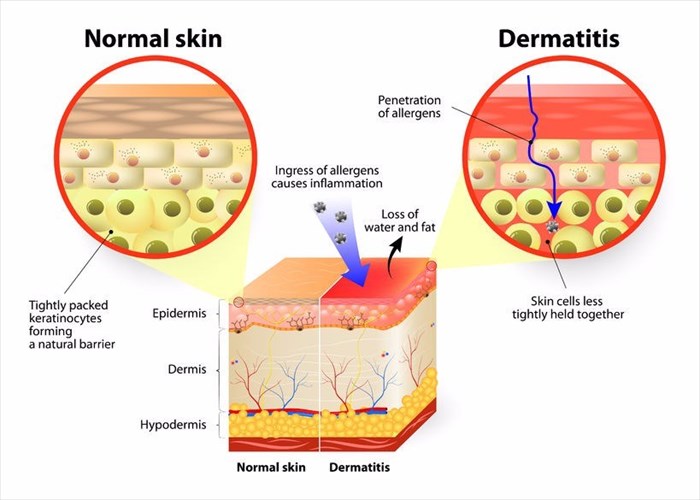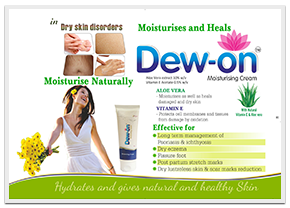Atopic dermatitis
- Atopic dermatitis (AD, a type of eczema) is an inflammatory, relapsing, non-contagious and pruritic (itchy) skin disorder. It has been given names like "prurigo Besnier," "neurodermitis," "endogenous eczema," "flexural eczema," "infantile eczema," and "prurigo diathésique".
Treatment for Atopic dermatitis:
- Although there is no cure for atopic dermatitis, it can be controlled with preventive measures and medicines.
Treatment helps stop the rash from recurring (flares) and controls itching.
You can generally bring the rash and itching under control within 3 weeks of a flare.
Specific treatment depends on the type of rash you have. Typically, a combination of corticosteroid medicines and moisturizers is used.
- Counseling also can be helpful for children and adults with atopic dermatitis.
Talking with a counselor can help reduce stress and anxiety caused by atopic dermatitis and can help a person cope with the condition.
- Initial and ongoing treatment for atopic dermatitis includes:
- Avoiding dry skin. This is essential in treating atopic dermatitis. Keep your or your child's skin hydrated through proper bathing and use of moisturizers.
This includes bathing in lukewarm water, bathing for only 3 to 5 minutes, avoiding gels and bath oils, and using soap regularly only on the underarms, groin, and feet.
Apply a moisturizer immediately after bathing.
- Avoiding irritants that cause a rash or make a rash worse. These include soaps that dry the skin, perfumes, and scratchy clothing or bedding.
- Avoiding possible allergens that cause a rash or make a rash worse. These may include dust and dust mites, animal dander, and certain foods, such as eggs, peanuts, milk, wheat, fish, or soy products. Talk to your doctor first to determine whether allergens are contributing to your atopic dermatitis. For more information, see the topic Food Allergies.
- Controlling itching and scratching. Keep your fingernails trimmed and filed smooth to help prevent damaging the skin when scratching. You may want to use protective dressings to keep from rubbing the affected area. Put mittens or cotton socks on your baby's hands to help prevent him or her from scratching the area. Coal tar preparations applied to the skin also may help reduce itching. You may need medicine to heal your rash and reduce itching.
- Topical corticosteroids (such as hydrocortisone, betamethasone, and fluticasone) are the most common and effective treatment for atopic dermatitis. They are used until the rash clears and may be used to prevent atopic dermatitis flares. Topical medicines, such as creams or ointments, are applied directly to the skin.
- Calcineurin inhibitors (pimecrolimus and tacrolimus) are topical immunosuppressants-medicines that weaken your body's immune system. The U.S. Food and Drug Administration (FDA) recommends caution when prescribing or using Elidel (pimecrolimus) cream and Protopic (tacrolimus) ointment because of a potential cancer risk.5 The FDA also stresses that these medicines only be used as directed and only after trying other treatment options. Calcineurin inhibitors are not approved for children younger than 2 years of age.
- Antihistamines (such as diphenhydramine and hydroxyzine) are often used to treat itching and to help you sleep when severe night itching is a problem. But histamines are not always involved in atopic dermatitis itching, so these medicines may not help all people who have the condition. Don't give antihistamines to your child unless you've checked with the doctor first.
- Antibiotic, antiviral, or antifungal medicines are used to treat an infected rash.




